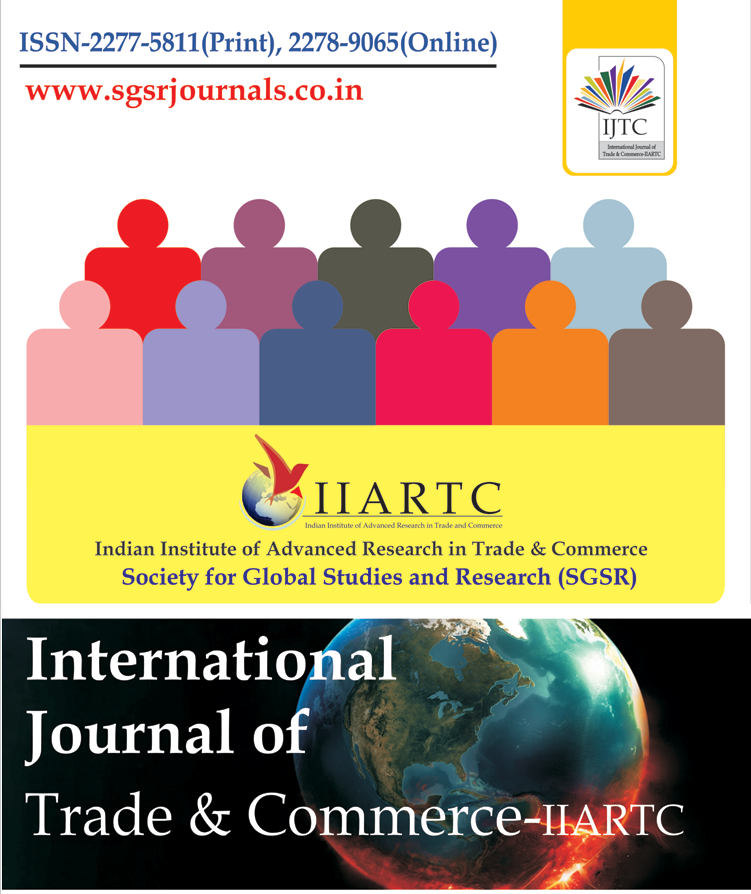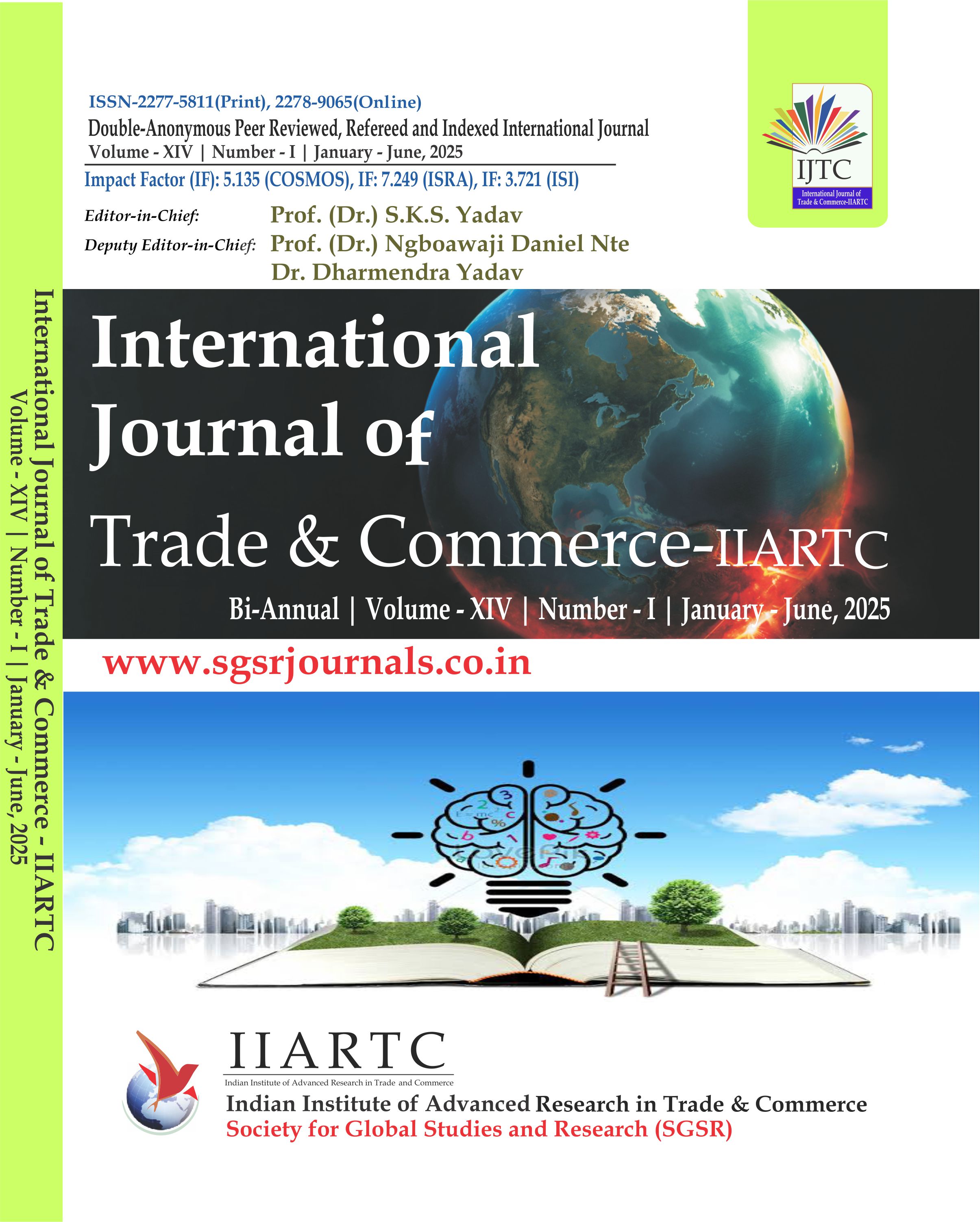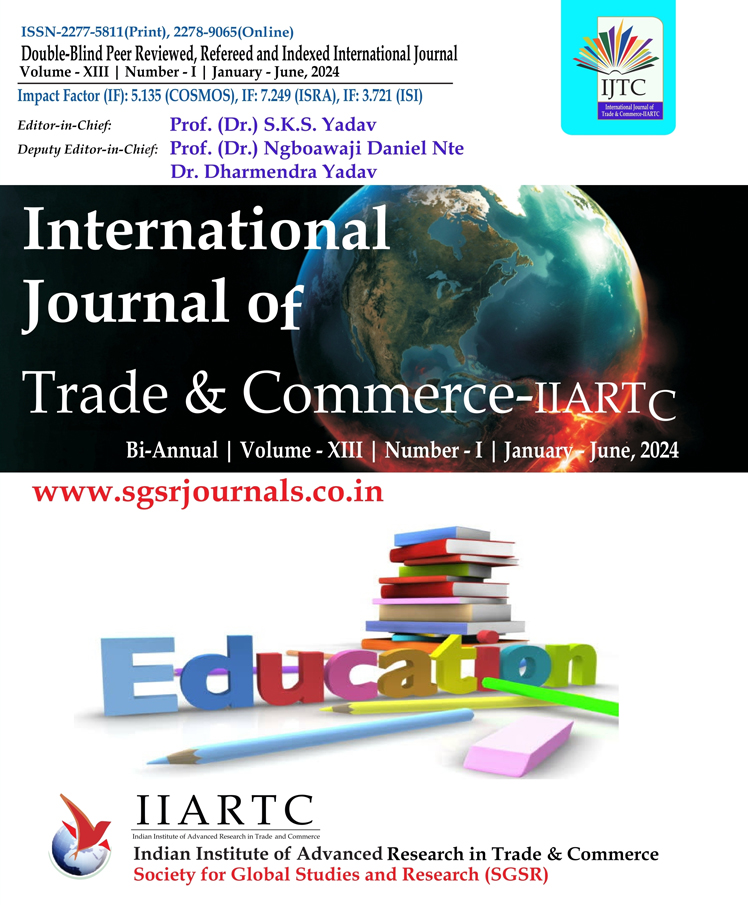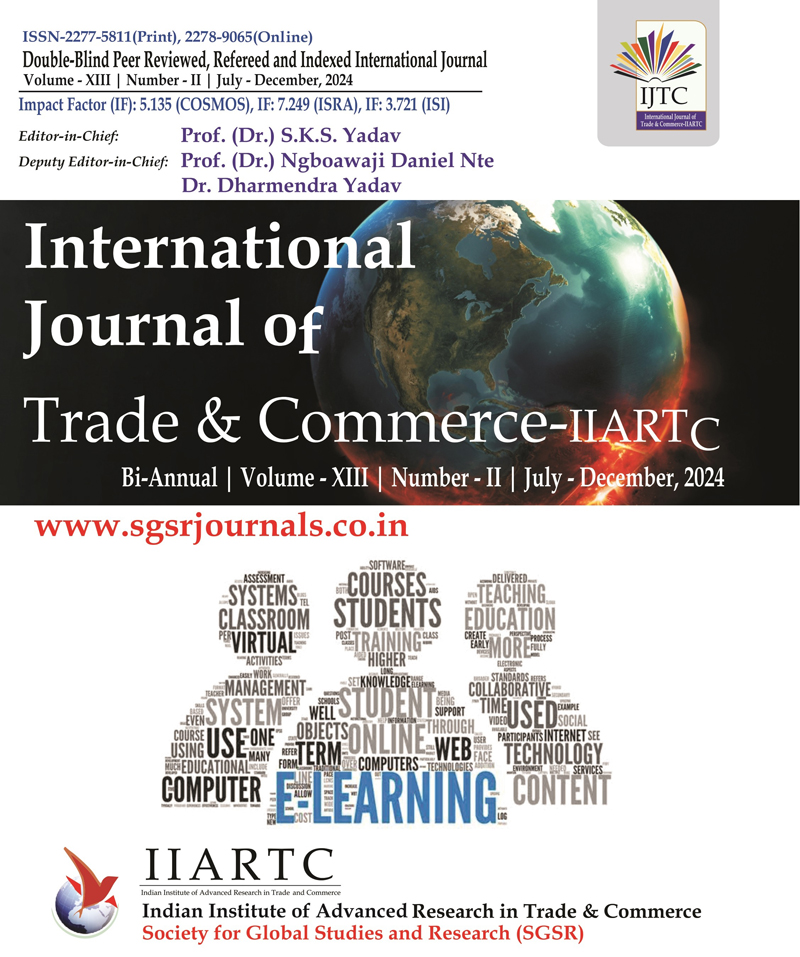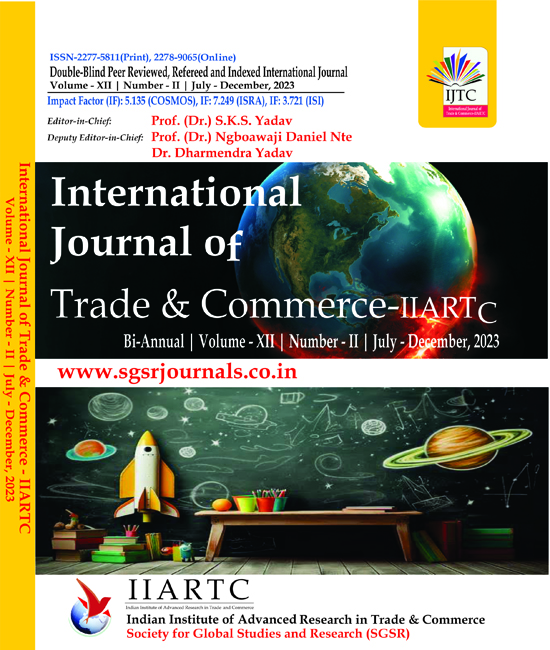
Commerce, Meerut College, Meerut

Dhaka School of Economics, Dhaka School of Economics

Faculty of Business Studies, Jagannath University Dhaka

,

Faculty of Technical Studies, Dt Kliment Ohridski Bitola Macedonea

Faculty of Management & Social Sciences, College of Management & Social Sciences Novena University
Abstract: This study was aimed to identify the effect of social intelligence on the academic burnout among college students who were studying in different faculties (Science, Commerce, Arts). The data was collected from different colleges situated in Meerut city. A total 300 students studying different colleges under CCS University were participated. Burnout was measured by Copenhagen(2012)’s Burnout Scale while Social Intelligence by Chadda and Ganeshan (2009). Multiple Regression was used to find our predictors for the burnout among college students. Regression Analysis revealed that social intelligence was emerged as important predictor of burnout. Further T test also revealed significance difference between groups. It was found that female students were having more burnout problems as compare to male participants. Students’ social intelligence is a Type a perceiving ability to understand social cues and effectively navigate social situations. It is ability to cope with burnout or stressors and maintain balance between academic and personal life. In this paper the present study has social applied application Academic Achievement, Mental health and general wellbeing can all be affected by social intelligence. Thus the present study is to examine low social intelligence affects college’s student abilities to handle their burnout problems.
Abstract: The COVID-19 pandemic, which began as a global health crisis, quickly escalated into a far-reaching economic disruption, significantly impacting industries across the world. The Indian sugar industry—one of the country’s most critical agro-based sectors—was no exception. As a key contributor to rural livelihoods, employment, and the national economy, the industry found itself grappling with unprecedented challenges across its entire value chain. The impact was observed from the very first stage of sugarcane cultivation, which faced labor shortages and transportation issues, to the subsequent phases of processing and manufacturing, which suffered from reduced mill capacities and supply chain constraints. Ethanol production, a major revenue source through the Ethanol Blended Petrol (EBP) programme, experienced demand fluctuations tied to global oil market volatility. Moreover, marketing and export activities came to a near halt due to domestic lockdowns and international trade restrictions, resulting in inventory surpluses and financial stress across the sector. This study provides a comprehensive analysis of the multifaceted disruptions caused by the pandemic. It highlights the systemic vulnerabilities exposed during the crisis, the operational and financial challenges encountered by stakeholders—ranging from farmers to mill operators—and the mitigating measures undertaken by both the government and industry associations. In addition, the research proposes a strategic recovery roadmap focused on diversification, supply chain resilience, policy adaptability, and long-term sustainability. By exploring these dimensions, the study aims to contribute to the development of a more robust and crisis-resilient Indian sugar industry in the post-pandemic era.
Abstract: Eastern Region of India (ERI) is the inclusion of four states namely – Bihar, Jharkhand, Odisha, and West Bengal. It has 171040 villages with a vast quantity of rural population. It also includes several tribes in various areas. ERI also has forest resource with several products namely - fuelwood, fodder, edible nuts, herbs, flowers, seeds, leaves, bark, roots, tubers, lichen, honey etc. It has tradition of non-veg and veg cuisines. It is known for hand woven clothes. Jewellery, furniture, baskets, etc. handicraft products have attraction for people in rest of India. ERI is sea coast rich region. It owns much from marine activities. It has thousands of villages. For the socio-economic development of RURAL ERI, 8 Regional Rural Banks are established. These RRBs are the joint venture of central government, state government and scheduled banks. Main aim of these RRBs is rural development. These RRBs are shaping their aim with commitment. In the ERI, deposits, advances of RRBs are increasing continuously, NPA is lessening. RRBs in ERI are earning profit. ERI-RRBs are trying best to achieve the aim. This fact is certified by balance sheets, annual reports, and documents of RRBs, NABARD, RBI and State Governments. Primary cum secondary data and tools are used. Research provides useful conclusion and suggestions for the insight of policy makers. ERI scenario will change completely if conclusions and suggestions of research are implemented according to spirit.
Abstract: Workplace diversity and inclusion (D&I) have become critical drivers of innovation, employee well-being, and organizational performance. The success of D&I efforts, however, depends significantly on the dominant organizational culture, which influences employee attitudes, behaviors, and inclusivity-related policies. This research explores the complex relationship between organizational culture and workplace diversity and inclusion, investigating how cultural values, leadership, and HR policies affect the success of diversity efforts. Based on a comprehensive literature review, case studies, and empirical studies, this research emphasizes the most important aspects of an inclusive organizational culture, including leadership commitment, psychological safety, fair hiring practices, and open communication. It also examines typical obstacles to inclusivity, such as unconscious biases, resistance to change, and structural disparities in organizations. The study also examines the contribution of transformational leadership and corporate social responsibility (CSR) in fostering a positive cultural change towards inclusivity. Findings indicate that organizations with a robust, inclusive culture have more engaged employees, better team collaboration, and better organizational reputation. In contrast, firms that do not embed diversity and inclusion into their cultural narrative stand to see greater turnover, intra-workplace conflict, and diminished innovation. The research concludes by offering strategic recommendations to organizations on how to create and maintain a culture that proactively supports diversity and inclusion through leadership commitment, customized training programs, and inclusive policy making.
Abstract: Bangladesh is one of the most prominent developing country in the world, the RMG sector is one of the prime earning sources of Bangladesh. Now Bangladesh is listed one of the gigantic garment exporters of the world. The garment industry is around Eighty four percent of total exports zone of Bangladesh. In Bangladesh more than four million people are worked in this garments industry. Around eighty percent (that is, 3.2 million workers) of the garment workers are female in Bangladesh. According to Bangladesh Garment Manufacturers and Exporters Association (BGMEA), the female garments workers are victim of high prevalence of violence and injustice in the work place. The violence and injustice the female garments workers are faced are adversely affect their physical and mental state. This research paper discusses the complication of gender dimension, fitness, well being and protection matters and hurdle of female garment workers of Bangladesh. Here the author used regression analysis, chi-square test, pearson R test, independent T test in order to explain the factors affect safety issue of female garments workers and the injustice towards them.
Abstract: Eastern Region of India (ERI) is the inclusion of four states namely – Bihar, Jharkhand, Odisha, and West Bengal. It has 171040 villages with a vast quantity of rural population. It also includes several tribes in various areas. ERI also has forest resource with several products namely - fuelwood, fodder, edible nuts, herbs, flowers, seeds, leaves, bark, roots, tubers, lichen, honey etc. It has tradition of non-veg and veg cuisines. It is known for hand woven clothes. Jewellery, furniture, baskets, etc. handicraft products have attraction for people in rest of India. ERI is sea coast rich region. It owns much from marine activities. It has thousands of villages. For the socio-economic development of RURAL ERI, 8 Regional Rural Banks are established. These RRBs are the joint venture of central government, state government and scheduled banks. Main aim of these RRBs is rural development. These RRBs are shaping their aim with commitment. In the ERI, deposits, advances of RRBs are increasing continuously, NPA is lessening. RRBs in ERI are earning profit. ERI-RRBs are trying best to achieve the aim. This fact is certified by balance sheets, annual reports, and documents of RRBs, NABARD, RBI and State Governments. Primary cum secondary data and tools are used. Research provides useful conclusion and suggestions for the insight of policy makers. ERI scenario will change completely if conclusions and suggestions of research are implemented according to spirit.
© sgsrjournals.co.in All Rights Reserved | Design by Sunrise Technologies

